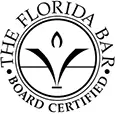Road Rage Causes Serious Accidents
Most drivers have experienced feelings of anger while driving, particularly in traffic. However, some people choose to act on those feelings by driving aggressively or—even worse—with road rage.
Seattle is currently the sixth worst place in the nation when it comes to traffic, and adding to the congestion caused by a reported 60,000 people spending an average of 90 minutes on the road trying to get to work each day, there is also road construction to contend with. The “Seattle Squeeze” construction project is the busiest in the nation, and is expected to cause traffic tie-ups until 2024.
According to the Washington State Patrol, aggressive driving-related fatalities were up by 21 percent, with the three highways seeing the most aggressive driving deaths being I-5, I-90, and State Route 18. So, what is aggressive driving? When does aggressive driving become road rage? How can you protect yourself from falling victim to someone else’s road rage? Read on to learn more.
Aggressive Driving or Road Rage: What’s the Difference?
The terms “aggressive driving” and “road rage” are often used interchangeably. However, while road rage contains many of the same features as aggressive driving, the differences between the two terms lies in the intent, according to Safe Motorist.
- Aggressive driving is the commission of one or more traffic offenses, often while the driver is in a hurry.
- Road rage is the commission of these traffic offenses with the intent to endanger other persons or property or assault with a motor vehicle or other dangerous weapon while as a driver or a passenger of one motor vehicle on the driver or passenger of another motor vehicle.
Road rage is considered a societal condition in which a motorist loses his or her temper, generally in response to a traffic condition. The term road rage was coined by a Los Angeles news station in response to a series of roadside shootings that were occurring on freeways throughout the city.
Some of the traffic offenses that are considered aggressive driving and may also be a symptom of road rage include:
- Tailgating
- Improper lane changing
- Illegally passing on the shoulder of the road, the sidewalk, or the median
- Passing where prohibited
- Speeding or driving too fast for conditions
- Failing to yield the right-of-way
- Failing to signal
- Racing
- Making improper turns
- Using headlights or brakes to “punish” other drivers
Additional examples of road rage, as revealed in a AAA Foundation for Traffic Safety study include:
- Yelling at another driver
- Honking to show anger or annoyance
- Making angry gestures
- Attempting to prevent another vehicle from changing lanes
- Deliberately cutting off another driver
- Getting out of the vehicle to confront another driver
- Bumping or ramming another vehicle on purpose
- Brandishing a firearm toward another driver
KOMO News reported that the following incidents of road rage have occurred in Washington recently:
- In April 2019, a driver of a Honda sedan fired a shot at the driver of a Mini Cooper on Highway 99 in Lynnwood. The driver of the sedan then fled the scene but was captured a short time later after a witness provided footage from a dashboard camera to police.
- In May, a motorcyclist had the driver of a car try to force him off the road. Before that happened, the driver reportedly sped around the motorcyclist, brake-checked him, and began throwing things at him from the car’s window and sunroof.
- In April 2018, a man and his pregnant wife were driving to work in Tacoma at about 6 AM when an angry driver cut him off on I-5. The driver then slammed on his brakes, pulled out a gun, and fired it twice at the couple’s vehicle. The man suffered a gunshot wound to the leg, and the angry driver was never located by the police.
- In February 2018, a female motorcyclist shot and killed a 60-year-old man on I-5 in Tacoma after he became upset about how she was driving. The two fought on the side of the roadway and the man slammed the woman’s head against a barrier before she shot him in the chest after he climbed on top of her. No charges were filed.
What Causes Road Rage?
While traffic congestion and work zones are frequent causes of road rage, there are several others, including:
- The driving behaviors of others, including those talking on cell phones while driving or following too closely.
- Lack of sleep or hot temperatures which can make you irritable.
- Consumption of alcohol, which can cause rage behavior even if you are below the legal limit.
- Stress at work or in your personal life.
- The inability to release anger or stress in healthy ways.
- Taking the actions of others personally, such as deciding when a driver cut you off that they did it on purpose.
- Being the recipient of aggressive driving behaviors such as being tailgated, being cut off, being momentarily blinded by someone else’s headlights, or being the object of someone else’s angry honks or rude gestures.
- Anonymity when in the car, which makes some people behave in ways they normally wouldn’t around people they know.
- Believing that you are in control, due to your superior driving or skill.
The Startling Statistics About Road Rage
Some of the most startling statistics to be found regarding road rage come from the 2016 AAA study regarding the road rage behaviors that drivers are committing and how many of the drivers are committing them. The study was based on analysis of online surveys completed by 2,705 nationally representative drivers aged 16 and over in the United States. The findings reveal that an estimated number of drivers across the nation have engaged in the following behaviors in the past year:
- Purposefully tailgating: About 51 percent, or 104 million drivers
- Yelling at another driver: About 47 percent, or 95 million drivers
- Honking out of anger or annoyance: 45 percent, or 91 million drivers
- Making angry gestures: 33 percent, or 67 million drivers
- Trying to block another vehicle from changing lanes: 24 percent, or 49 million drivers
- Cutting off another vehicle on purpose: 12 percent, or 24 million drivers
- Getting out of the vehicle to confront another driver: 4 percent, or 8 million drivers
- Bumping or ramming another vehicle on purpose: 3 percent, or 6 million drivers
The study also revealed that nearly 80 percent of drivers on U.S. roadways state that they expressed significant anger, aggression, or road rage behind the wheel at least once in the past year.
Additional facts from the National Highway Traffic Safety Administration show:
- Sixty-six percent of traffic deaths in the United States are caused by aggressive driving
- Of those fatalities, more than a third involved the use of a firearm
- Two percent of drivers admit to trying to run another vehicle off the road
- The drivers most likely to commit road rage behaviors are males under the age of 19
- Half of the drivers, when faced with road rage behaviors from other drivers such as honking, a rude gesture, or purposeful tailgating admit to retaliating against that driver with aggressive behavior of their own
- In seven years’ time, road rage led to more than 200 murders and more than 12,000 injuries. It is estimated that about 30 murders a year take place in the United States due to road rage, including those involving deliberately-caused traffic accidents, firearms, or even violence at someone’s residence after an angry driver follows them home.
How to Prevent Road Rage
Have you been guilty of aggressive driving or road rage behaviors while behind the wheel? Safe Motorist offers the following questions to ask yourself when examining whether you could be endangering others with road rage behaviors:
- Do you regularly commit traffic offenses such as speeding or running red lights because you’re in a hurry?
- Do you tailgate or flash your headlights at drivers when you feel that they are moving too slowly?
- Do you frequently honk your horn out of anger or to “make a point” to other drivers?
- Do you use gestures or other forms of angry communication toward other drivers?
AAA offers the following suggestions for toning down the rage while driving:
- Forget about winning. Driving isn’t a competition. Leave a little earlier to reach your destination on time without feeling like you need to race the clock or other drivers.
- Listen to soothing music or a book on tape during your commute, or practice relaxation techniques such as deep breathing.
- Don’t take the driving skills of others personally. Try to put yourself in their shoes and realize that they’re simply trying to reach their destination just as you are and that they have their own reasons for driving as they do.
- Avoid making rude or obscene gestures at other drivers. This does nothing to help the situation, and it is likely not going to allow you to reach your destination any faster. Keep your hands on the wheel and your eyes facing forward.
- Seek help through anger management courses or self-help books about anger management or how to reduce stress.
Other suggestions include:
- Be sure you’re getting enough sleep at night, as being tired can make you more irritable.
- Be aware of stressful situations in your life and how they may affect your driving. For example, if you just argued with your spouse, give yourself plenty of time to cool down before getting behind the wheel, where you could take out your stress and anger on other drivers.
- If you’re stuck in a traffic jam, stay calm and realize that you’re going to be late. Being late is not the end of the world, but getting into a scuffle with another driver or causing an accident could be.
- Keep in mind the old saying that “80 percent of people believe that their driving is above average.” It is a statistical improbability. If you can remember that you have made mistakes while driving, it is perhaps a little easier to remember that others do as well.
- Remember to give yourself positive self-talk. Instead of becoming angry with another driver after a close call, assure yourself that you’re all right and that you handled the situation.
How to Avoid Someone Else’s Road Rage
Just as you want to check your behaviors for road rage symptoms, you want to use care when driving to avoid provoking the road rage of others. Here are some tips as to how to do this:
- Avoid distractions such as talking on a phone that may cause you to lose focus on your own good driving skills.
- Don’t offend. Be a courteous driver. This means always using your turn signal when changing lanes or turning, allowing an acceptable amount of space between your vehicle and the one in front of it, and not driving too slowly in the left-hand lane.
- Don’t retaliate. If you find yourself being the recipient of aggressive driving, it is important to remain calm and not respond in-kind.
- Change lanes if necessary to steer clear from an aggressive driver.
- Honk your horn only as a means of defensive driving to avoid an accident. Don’t use your horn as a means to convey your irritation about sitting in traffic.
- Don’t make eye contact when confronted by an aggressive driver. Don’t get out of your car to confront them, either.
- Get help if you need it. If you have a cell phone, use it to call the police. Otherwise, stop in a public place where there are plenty of people around and use your horn to get someone’s attention, as this will generally scare off the aggressor. Whatever you do, don’t go home if it appears that an angry driver is following you.
If you were injured in an accident that someone else’s aggressive driving behaviors or road rage caused, you may be eligible to receive compensation. An experienced car accident attorney can help you understand the legal options that are available to you, or answer any questions you may have regarding a road rage incident.
Free Consultation
We Are Here For You 24/7
Reviews
– Elissa M.
“Really pleased with Boohoff Law! Received immediate responses when I had any questions. Treated amazingly by all staff … made this process a true breeze!”
– Caitlyn M.
– Brandy K.
Related Posts
I Was Partially At-Fault in a Rear-End Crash. Can I Still Get Compensation in Florida?
I Was a Passenger in an Uber Accident. What Are My Rights?
What Damages Can I Recover After a Jackknife Truck Accident?
Recovery is personal.
We’re here for you.
We’re close by. And if you can’t make it to us, we’ll meet you where you need us, at home or in the hospital.
You're better off with Boohoff.











The information on this website is for general information purposes only. Nothing on this site should be taken as legal advice for any individual case or situation. This information is not intended to create, and receipt or viewing does not constitute, an attorney-client relationship.
available 24/7
(877) 999-9999
